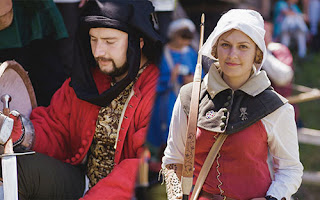Medieval combs (part 1)
Source: Dovzhenok, Vasyl Iosypovych
1966 Drevnoruske misto Voïn. Naukova dumka, Kiev. [in Russian]
(Довженок В. Й., Гончаров В. К., Юра Р. О., Древньоруське мiсто Воїнь, К., 1966.)
About the place where the comb was found:
The border town Voin' of the Principality of Pereyaslavl was first mentioned in chronicles in 1055.
The land of Principality of Pereyaslavl stretched over the huge territory from the left banks of the middle Dnieper river on the west to its eastern frontier that laid not far west from the Seversky Donets, where the Cuman city of Sharukhan was probably located. So in all chronicles Voin' appears as important boundary fortified settlement.
The city was repeatedly burned. It was destroyed by Cumans in 1185, and finally ruined by the Mongol invasion of Rus' in 1239.
During the archaeological excavations were found the remains of a blacksmith's workshop, numerous finds of weapons (blades of swords, arrowheads, axes, maces, fragments of chain mail and armor), tools of artisans (jewelers, bone carvers) and agricultural tools. Among the findings the are Byzantine coins, fragments of imported amphorae, glassware, etc.
Currently the place is flooded by the waters of the Kremenchug reservoir.
Source: 1985 Kolchin, Yanin, Yamshchikov - Drevniii_Novgorod. Prikladnoe iskusstvo i arheologiya [in Russian]
(Колчин Б. А., Янин В. Л., Ямщиков С. В. - Древний Новгород. Прикладное искусство и археология, 1985)
About the place where the comb was found:
The Novgorod Republic was a medieval East Slavic state from the 12th to 15th centuries, stretching from the Baltic Sea to the northern Ural Mountains, including the city of Novgorod and the Lake Ladoga regions of modern Russia. Novgorod was the city of trade, it was a hub at the northern end of both the Volga trade route and the "route from the Varangians to the Greeks" along the Dnieper river system. Leading exports from Novgorod included furs and wax was highly valued all around Europe.
During the XII-XIII centuries 10 types of combs were changed in Novgorod, at the same time there were up to 6 types. They were decorated with the circular, linear or other ornaments.












1 коммент. :
Write коммент.Your blog was so amazing if you want to buy comb for hair growth at low price visit our store
Reply